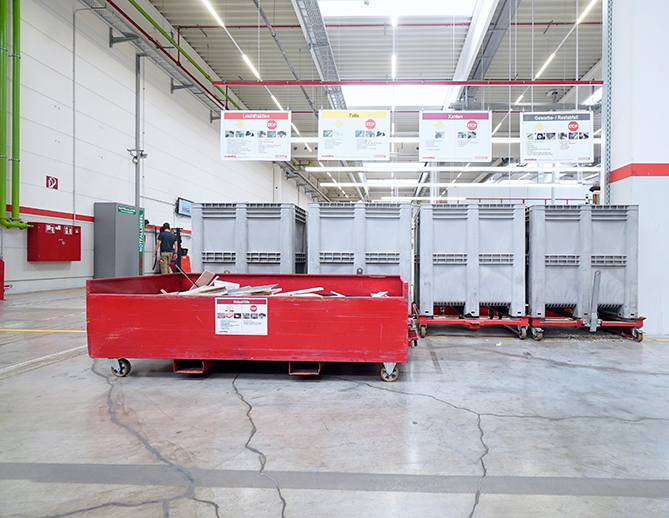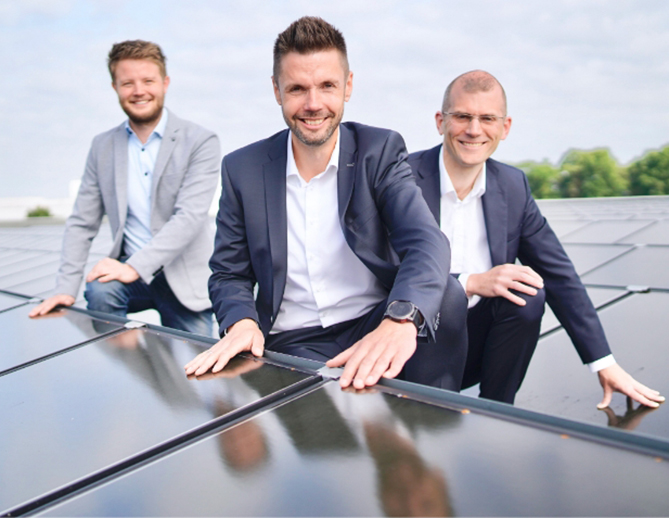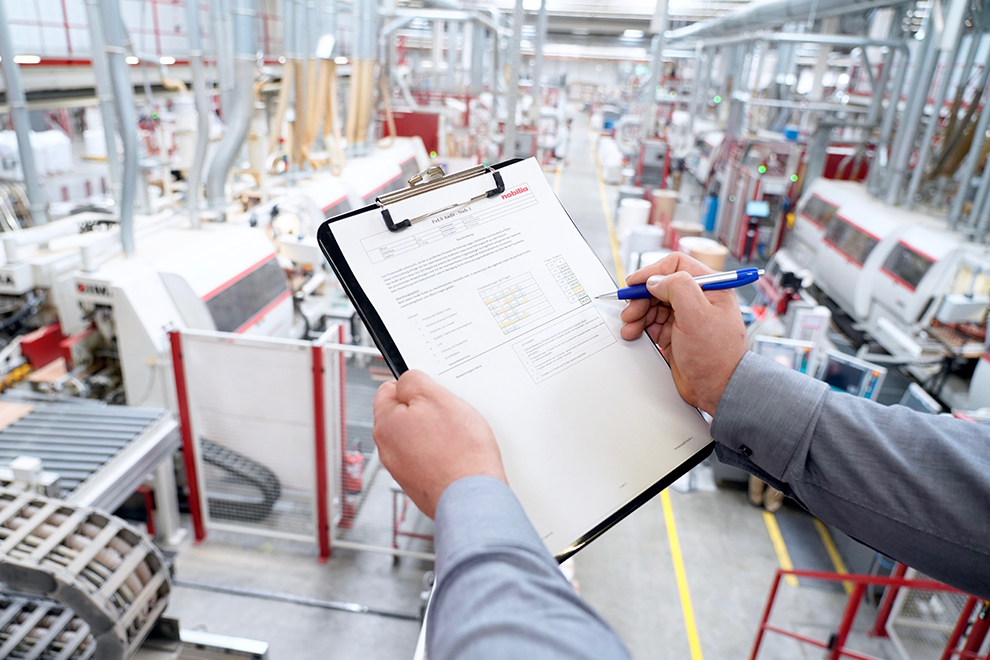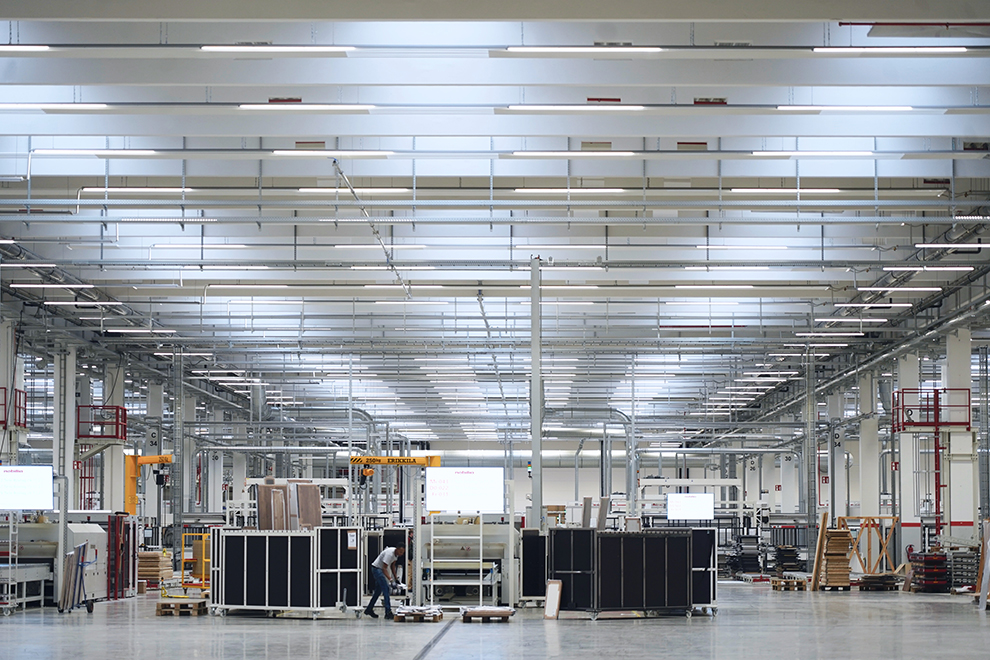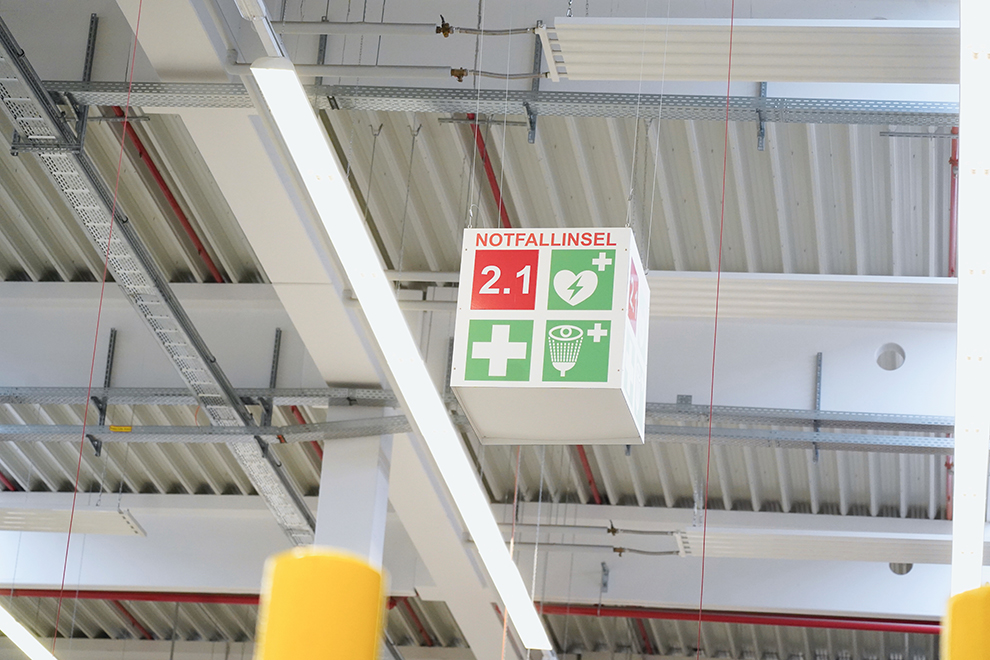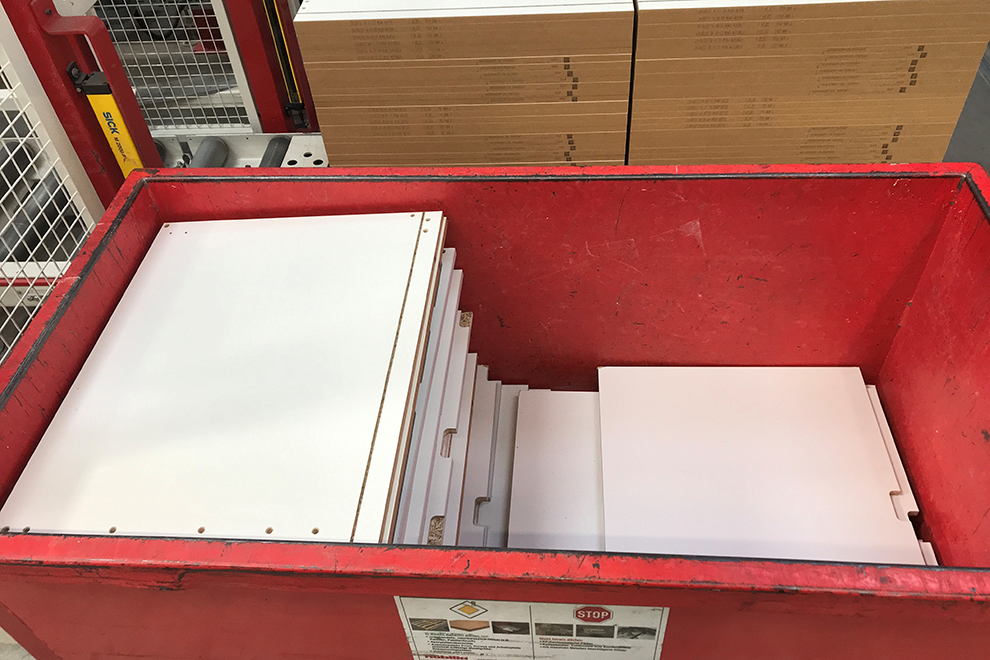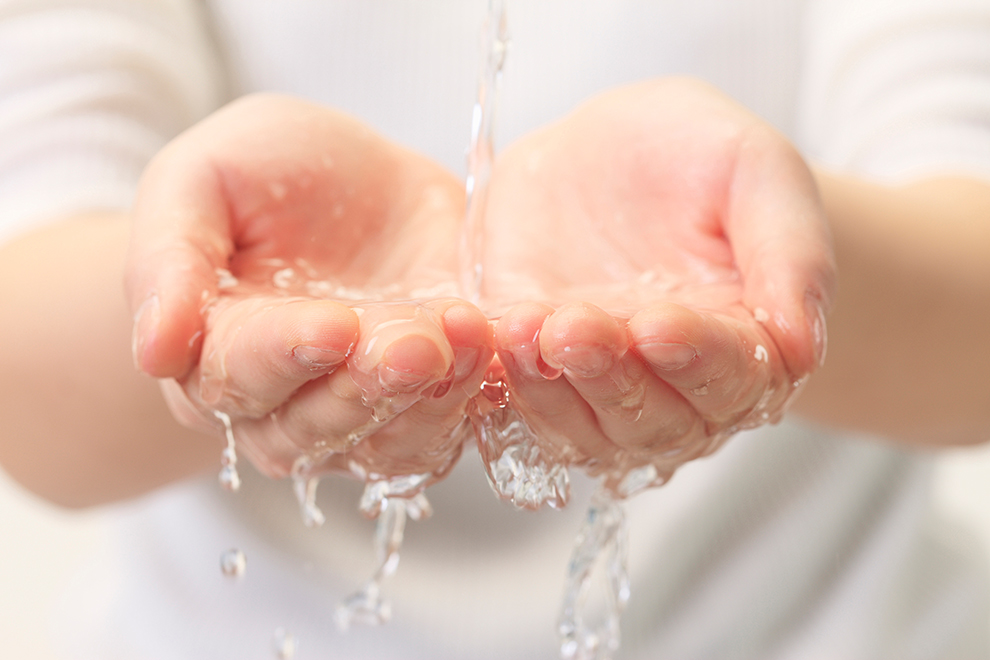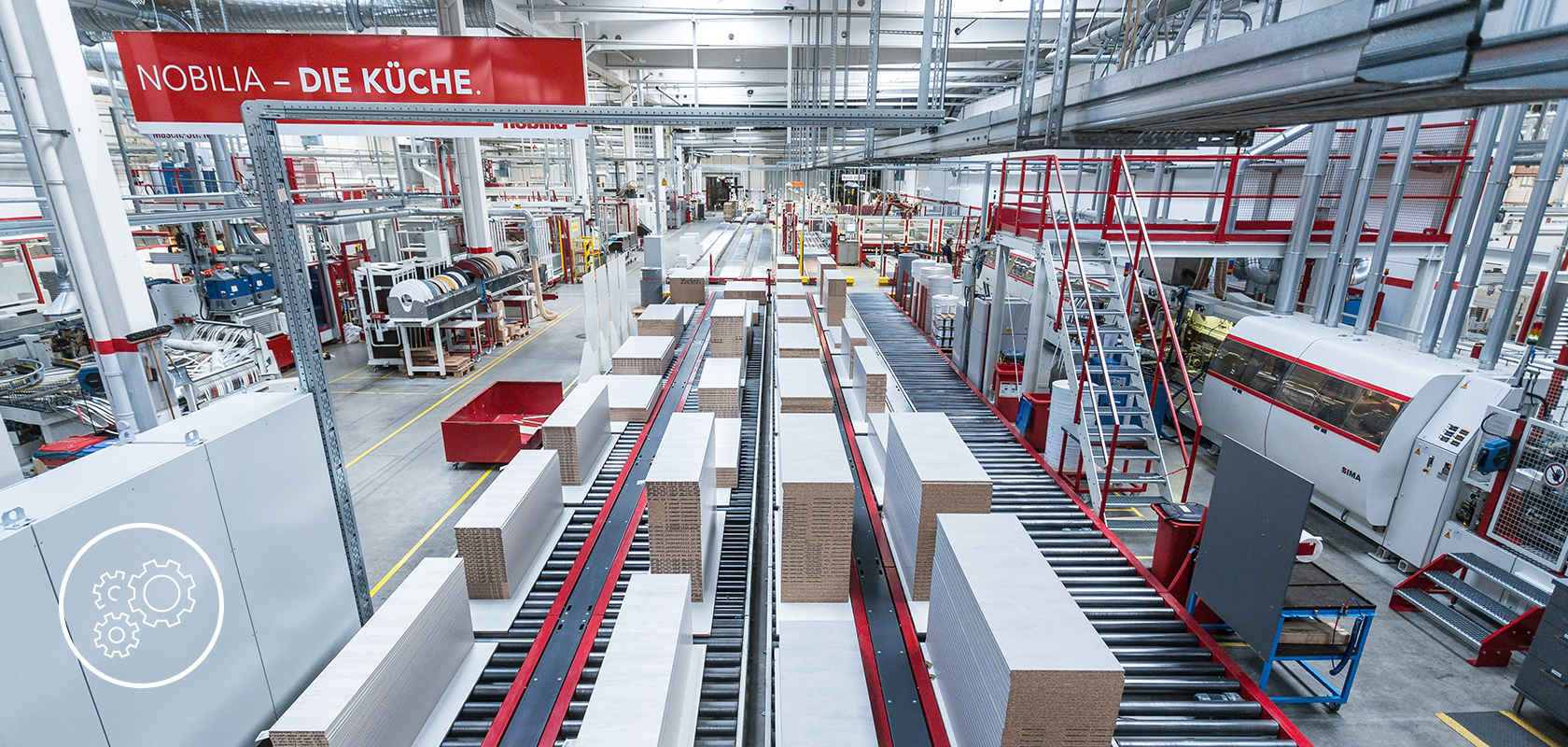
Carbon footprint
A carbon footprint is a measure of the amount of CO2 emitted, for example by a company. In 2022, we produced approximately 64,993 tonnes of CO2 emissions. Based on around 803,524 kitchens, that amounts to some 81 kg of CO2 per kitchen. The present greenhouse gas balance of 81 kg CO2 shows the emissions that arise in direct connection with the company's own value creation. This is still too high for us. That’s why we’re pursuing a broad sustainability strategy aimed at improving our carbon footprint.
By the way, if we are to achieve the Paris Agreement goal of limiting the global temperature rise to 1.5 degrees, then every German will have to keep their CO₂ emissions below 1,000 kg each year. Obviously, there’s still a great deal for us to do – and we want to give it our best effort!
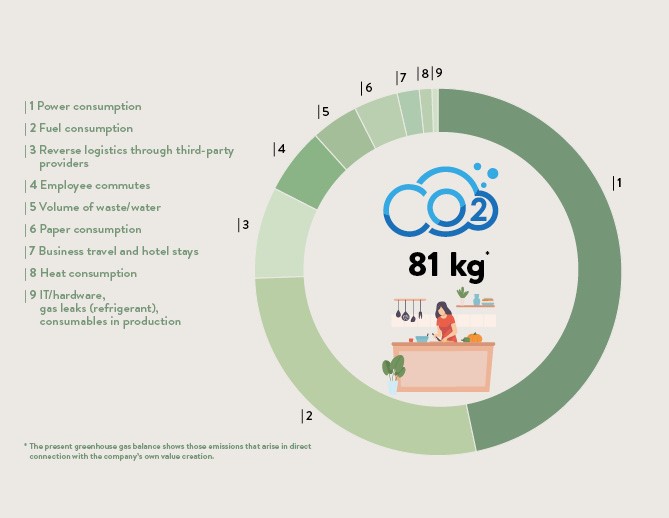
Solar installations
Energy is essential for production: machines have to be powered and people need, for example, good lighting to ensure a healthy and ergonomic workplace. Some of the electricity that we require for our business activities is obtained from renewables. We have a photovoltaic system on the roof of Plant IV and another installation of a similar size on an administration building – and we have now significantly expanded this share of our own clean significantly once again: The entire roof area of Plant III has been equipped with a photovoltaic system of the latest generation. This system has an output of more than 2,300 kWp - which covers the electricity needs of more than 400 single-family homes, but in our case it is used for self-sufficiency: around 50 % of Plant III's electricity requirements are
covered by the plant. In the summer of 2024, the plant was put into operation.
Heat recovery from air compressors
We heat our buildings with wood waste when the temperatures are lowest; during the milder months of the year, we use the waste heat from our air compressors as a source of heat. Heat is produced when air is compressed in these compressors. We take the waste heat generated through friction and compression and feed it into our heating circuits. If we didn’t use this waste heat, it would simply be discharged into the air. We therefore achieve a double effect: our heating water is also warmed up. This means that we don’t have to burn any additional energy sources to heat our buildings.
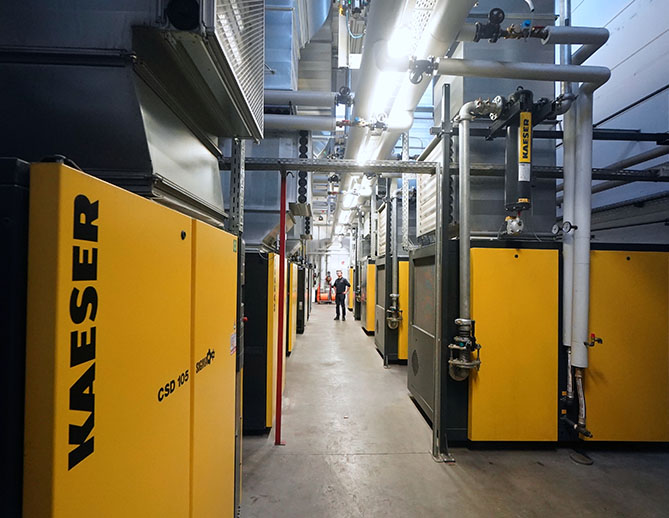
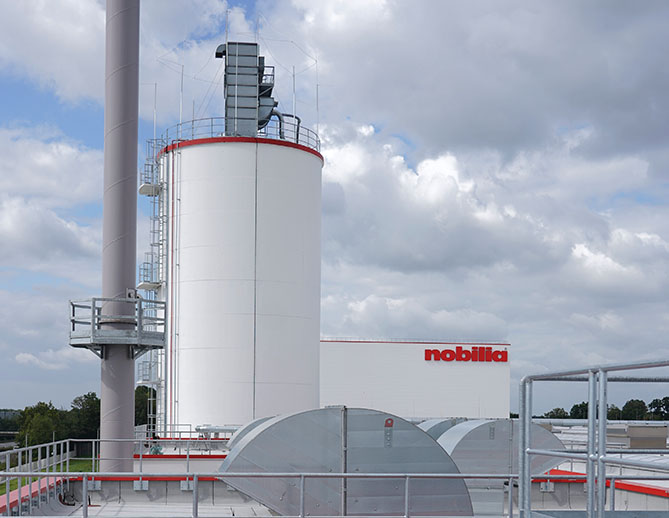
Using production waste for heating
We produce over 90,000 tonnes of wood waste a year. Of course, we don’t simply dispose of this, but re-use it in various ways. For example, we effectively recycle waste that can no longer be used: instead of meeting our heating needs with non-renewables such as oil, gas or coal, we utilise wood as a renewable material. This is an extremely sustainable use of our production waste. For example, it serves to heat our entire production facilities and the administration offices in Plants I, II, III and V, and therefore over 400,000 m2, primarily in winter.
Energy recovery from storage and retrieval machines
We generate electricity in our high-bay warehouses and reduce consumption at the same time. Our high-bay warehouse in Plant I has more than 27,000 pallet bays, for example. Fourteen fully automatic storage and retrieval machines (SRMs) are used there for pallet movements. These are in motion all day long. When such a machine carries a load from up high to down low, we make use of gravity: we utilise the motors of the SRMs as dynamos to generate electricity during braking and descending.
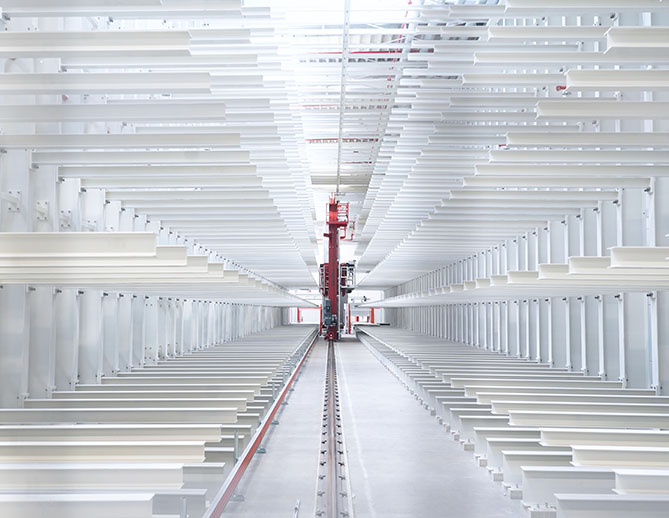
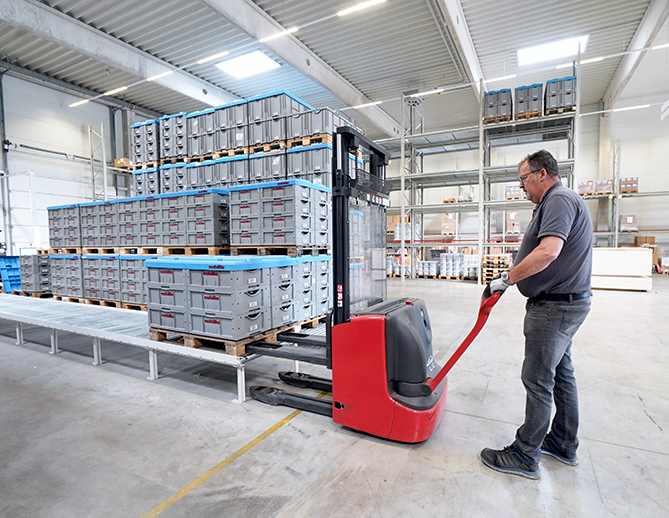
Reusable packaging
The best packaging is packaging that has not been produced in the first place. Wherever technically possible, we dispense with packaging entirely in all areas. To ensure goods are still protected, we use closed-loop systems. In cooperation with our suppliers, almost all production materials are delivered in such reusable packaging. Fittings, of which we need many thousands every day to produce drawers, pull-outs and the like, come to us in trays, like crates, instead of disposable boxes. These trays have a lifespan of many years and therefore save on disposable packaging.
Waste concept
Although a great deal of waste and scrap can be avoided, there will always be a certain amount of waste. With our comprehensive disposal concept, we endeavour to collect and carefully separate the waste. For this to work as standard across all plants, nobilia has defined all of the different types of waste and introduced a colour coding system. This system clearly illustrates to all employees which waste should be disposed of in which container. The different fractions of waste that result are subsequently taken away by certified disposal companies. In this way, we are managing to achieve a recycling rate of well over 60%.
